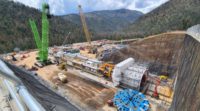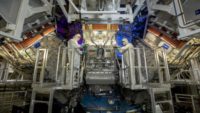 In his 1970s design vision for a permanent parliament in Australia’s capital of Canberra, according to an online government history, architect Romaldo “Aldo” Giurgola said the structure could not be built on top of the hilltop site, “as this would symbolize government imposed upon the people. The building should nest with the hill, symbolically rising out of the Australian landscape as true democracy rises from the state of things.”
In his 1970s design vision for a permanent parliament in Australia’s capital of Canberra, according to an online government history, architect Romaldo “Aldo” Giurgola said the structure could not be built on top of the hilltop site, “as this would symbolize government imposed upon the people. The building should nest with the hill, symbolically rising out of the Australian landscape as true democracy rises from the state of things.”
The Italy-born visionary, whose design became an award-winning national icon, died on May 15 in Canberra, his adopted city. He was 95.
As cofounder of U.S.-based Mitchell/Giurgola Architects, he won a global competition for the Canberra job out of 329 architects from 28 countries, ENR said in a 1980 story. Completed in 1988, the structure—a government complex surrounded by bermed earth that enabled visitors to walk on and around it—earned him the American Institute of Architects’ Gold Medal, among numerous awards in Australia, where he lived for three decades.
Media reports quoted contractors as saying the design was “eminently buildable,” but the project still faced a work stoppage, a “difficult” client and a late-cycle budget cut that tripled the final cost to $660 million, ENR noted in a 1987 project profile.
Even so, in 1999, the complex was named as one of ENR’s Top 125 Projects of the 20th century.
Giurgola also designed landmarks in his firm’s Philadelphia base and, with other architects, “helped make the city a hotbed of innovative design thinking in the 1960s,” said Philadelphia Inquirer architecture critic Inga Saffron.
He also designed the Wright Brothers National Memorial visitors center, one of the first Modernist designs accepted by the National Park Service. Giurgola also chaired the Columbia University architecture department.
Mitchell/Giurgola partner Paul Broches told Architectural Record, ENR’s sister publication, that the company name will continue to include Giurgola’s for “the significance it continues to carry in the profession.”






Post a comment to this article
Report Abusive Comment